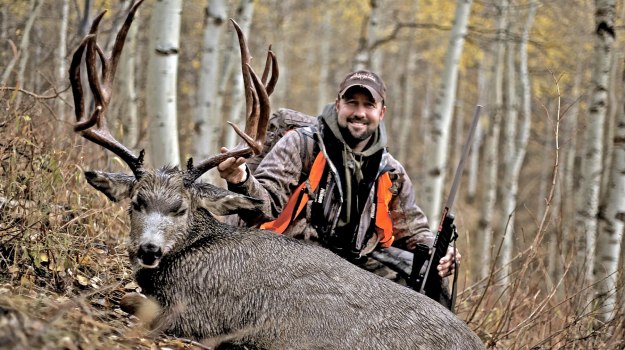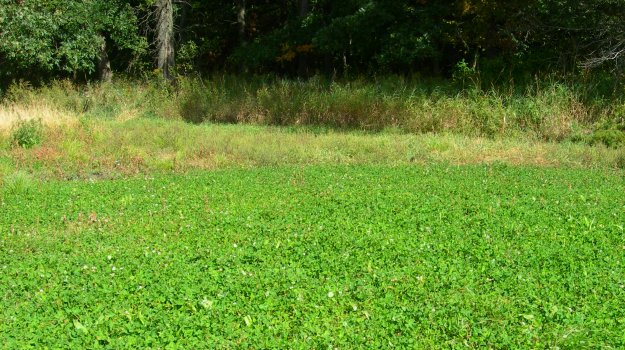
Lessons learned from when your food plot doesn’t go as planned
By Todd Kerestes
When embarking on the wilderness with the ambition of creating a successful food plot there are many obstacles. After entering the food plot world with zero farming experience several years ago, my brother and I have learned by making mistakes and adjusting. We have had great plans sketched on paper and pinned on maps go awry. Hopefully our trial and error can help you mend your food plot predicaments.
WEEDS TO SEEDS
One of our first major mistakes early in our food plot career was bad strategy and poor implementation of our preparation work. The preparation work is done before the seeds hit the dirt. It cannot be overstated how important it is to complete all of the steps recommended before actually planting food plots. Whether it is completing a soil test, proper liming and fertilizing or using herbicides, giving proper attention to each is a must – or, be prepared to be disappointed.
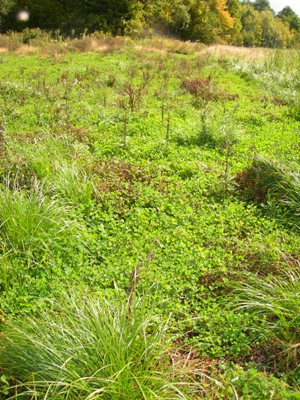 For us specifically, our first major “lesson learned” was on herbicide - and believing that it wasn’t necessary. Going into our first food plot we had no farming knowledge at all. We were very excited when a friend agreed to disk a field for us so we could give planting a food plot a try. To us, ignorant of the summer weed cycle, it was sufficient in our mind to chop the weeds up (“killing them” in our minds) and burying them in the ground. At the time, the cost of enough herbicide to spray a three acre field seemed overkill if the dead plants were just going to be buried by the disk anyway.
For us specifically, our first major “lesson learned” was on herbicide - and believing that it wasn’t necessary. Going into our first food plot we had no farming knowledge at all. We were very excited when a friend agreed to disk a field for us so we could give planting a food plot a try. To us, ignorant of the summer weed cycle, it was sufficient in our mind to chop the weeds up (“killing them” in our minds) and burying them in the ground. At the time, the cost of enough herbicide to spray a three acre field seemed overkill if the dead plants were just going to be buried by the disk anyway.
We did; however, spend money to buy lime, fertilizer, seeds, diesel for our friend’s tractor, and gas for our ATV. Additionally, we spent a lot of time and energy. But our first major food plot was basically a complete failure. We had some desirable plants grow, but so did the weeds…and at a much faster and furious pace until our plants were completely strangled out. In the end, the amount of extra money it would have cost to apply an herbicide would have greatly outweighed the burden of wasting all the money spent on everything else we purchased that was now for the most part, wasted.
If you are going to make the financial commitment to plant a food plot, taking all of the preparation steps and the budget into consideration is a must. We learned this lesson the hard way and it cannot be overemphasized how important it is to follow all food plot planting directions and soil test recommendations exactly the way instructed. If you don’t have the budget, plant less acreage. Every little bit helps and you’re better off doing half the acreage correctly than twice the acreage and skipping important steps.
“AS THICK AS THE HAIRS ON A DOG’S BACK”
We encountered another problem before any seedlings began to grow. We used too much seed for the area we needed to cover. When we seeded our first field we had three different one acre bags for a two acre field. The original plan was to plant this particular field and then plant another one acre plot or make some smaller quarter acre plots in other areas with the leftover seed. However, after starting in the early fall and quickly finding out how much time and work was involved in this first food plot we knew we wouldn’t be planting anything else that year.
After seeding the one plot we decided we had all of this extra seed so we might as well spread the extra bag and make a really thick and hearty “smorgasbord” food plot since we wouldn’t be able to plant any others. As most of you probably know, this is an extremely bad theory. One very common mistake in planting food plots is using too much seed. In fact, even though some of you know this, you still do it. The only thing this theory will do is create overcrowded conditions where your crop is starved for nutrients, water or sunlight. Always go by the planting instructions and soil test recommendations.
Along the same lines, another similar mistake we’ve made is setting our broadcaster too far open. We begin seeding the area and at the point of covering about half the area realize we will not have enough seed to make it across the whole plot. Now we have two problems, the area already seeded is going to be over-crowded and the second half of the plot will be under-seeded.
Measure out your area and then measure out exactly how much seed you’ll need to cover that area. Set your broadcaster lean enough so you can without a doubt cover the entire area and still have seed left in the hoper. Then simply go back over the area until the correct amount of seed has been dispersed. This is the best way to ensure proper coverage with a broadcaster.
SECURITY IN NUMBERS
We learned very quickly that using a seed “blend” like BioLogic’s Perfect Plot is preferred over a mono plot. Instead of “betting the house” on a single cultivar, you want to cover as many angles as possible. Why gamble all of your success on one single crop such as a clover or a brassica, when Perfect Plot gives you a much larger chance of success because you have a several different cultivars of several different species? There are exceptions to the rules, and if you are a great farmer it is possible to grow single cultivar plots successfully, but without the experience of knowing what will thrive in your specific area, in that exact soil, with your particular farming practices…why narrow your possibility of success?
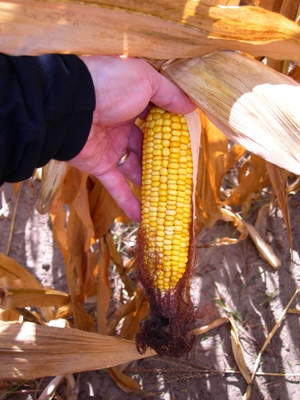 Obviously certain crops do better in different climates, in specific soils and when cared for properly, but with a blend, the cultivars that favor that soil and your specific management practices will emerge to the forefront.
Obviously certain crops do better in different climates, in specific soils and when cared for properly, but with a blend, the cultivars that favor that soil and your specific management practices will emerge to the forefront.
Just as having a variety in a blend is important, having variety in as many different types of plantings as possible is also critical. Having different plants like corn, brassicas, annual legumes, perennial legumes and cereal grains is imperative, but you should have several varieties of each. For instance, Todd Amenrud, Editor in Chief of GameKeepers, often says he likes to plant three varieties of corn with specific characteristics. He likes one variety that matures early, one variety that produces heavy yield and one variety that does well in drought conditions. Along the same idea, it’s one reason why products like Maximum, Clover Plus or BioMass are “blends” of multiple plants. You protect against failure and you dramatically extend the palatability timeframe with a blend over a mono-plot.
JUST BEING ME
We learned the difference between annuals and perennials during our first year. Looking back on the planting, we thought we may have done something wrong, or maybe it was because clovers just didn’t do well in our soil. The brassicas and cereal grains did exceptionally well but our clover and chicory just sat there for several weeks. Instead it was just the plants doing what they do. Annuals leap out of the ground because they need to go to flower and seed, but perennials just sit there after germination because they need to establish their root system. The second year is when the clover really takes off. New food plot farmers need to know what to expect.
Now I understand why some people in northern regions, where perennials are traditionally planted during the spring, might like to plant their annuals separate from their perennials. Perfect Plot is a great way to start perennials, but then the second year you have two options; you can overseed brassicas back to the same ground or keep it as strictly a perennial stand.
What should you do the year after planting a one of these blends like Perfect Plot or Premium Perennial? The perennial clover will come back and should grow well the following year but now you’re missing the annual brassicas. The prior growing season you’ll need to take into account that you had a fairly aggressive annual brassica growing along side of the clover so you’ll probably have some bare spots. Here, there are definitely repair options instead of having to do a full overhaul of the existing plot. I would assume that most would prefer to maybe overseed with a straight perennial like Clover Plus, let the perennials thicken-up and plant your brassicas separately just because it is easier to do and you’ll get the most for your money.
One option we have used very successfully, especially on our smaller hunting plots, is to hand seed and rake in additional perennial seed (Clover Plus) on the bare spots evacuated by the brassicas. You could also overseed the area and go over it with a roller or lightly with a cultipacker to ensure good seed contact. I like to rake the areas first to give the seed something to “grab” onto and then a rake can be used again to lightly cover the seed.
TRANSLATOR NECESSARY
Our seedlings came up great but so did the weeds that we essentially “planted” by disturbing the soil and then fertilizing them. Sometimes using an herbicide can be confusing. Monsanto, as an example, makes over 20 different variations of RoundUp. Each may require you to pay attention to different details. So there is much to remember.
Many managers new to the trade have made the same mistakes of spraying a complete burn-down herbicide like this too early in the year when the temperatures were too cold, or spraying too soon after mowing. In both cases the targeted plant is not growing vigorously enough to suck the poison into the root system for a complete kill. Reading each herbicide’s specific instructions and then heeding all its details is important.
SINGLED OUT
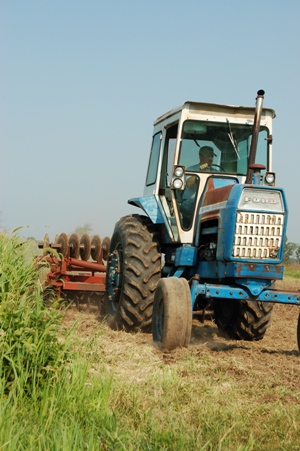 Fortunately we learned that there are “selective herbicides” that may be able to help in certain situations. A solution for us was to use an herbicide that kills specifically grass. We had a grass issue as the main competition so we used a chemical called sethoxydim, a grass herbicide. (Clethodim is another popular active ingredient in many brands of “grass-specific” herbicides). This is an agricultural chemical available by many different brand names that does not kill broad leaf species but will kill grass. As mentioned, our specific plot was BioLogic Perfect Plot. It contains brassicas, clovers, chicory, and alfalfa which are all broadleaf plants and are not harmed by sethoxydim.
Fortunately we learned that there are “selective herbicides” that may be able to help in certain situations. A solution for us was to use an herbicide that kills specifically grass. We had a grass issue as the main competition so we used a chemical called sethoxydim, a grass herbicide. (Clethodim is another popular active ingredient in many brands of “grass-specific” herbicides). This is an agricultural chemical available by many different brand names that does not kill broad leaf species but will kill grass. As mentioned, our specific plot was BioLogic Perfect Plot. It contains brassicas, clovers, chicory, and alfalfa which are all broadleaf plants and are not harmed by sethoxydim.
It became obvious very quickly that our plot would be completely strangled by weeds if we did not take action. We applied the sethoxydim and used a surfactant in a combination spray. A surfactant is a specialized additive formulated to help the herbicide adhere to the target plant better and improve the performance of herbicide. The sethoxydim ended up being a very successful kill on the majority of the grasses that were overtaking our plot.
OOPS…WE’VE RUN OUT
We finally had a successful plot! The deer were utilizing the food plot and we were happy. However, you can have such a successful stand that the deer will obliterate it. If you now have the primary food source in the area you will be thrilled at the success, but come early fall when the woods goes from green to brown your brassicas might be the only grocery store left in town. By hunting season you might not have any food plot left.
This calls for BioLogic’s P2 Plot Protector. Using the P2 Plot Protector can work successfully several different ways. One way to use it for full protection. The entire plot or field can be staked around the perimeter and the tape setup to essentially rope it off. The powerful wall of scent on the tape will create a wall to repel deer from the entire plot.
The P2 Protector can also be used strategically and is typically how we have used it. We like to utilize the P2 Plot Protector to save certain areas for hunting, but allow the deer to still come out and feed in the unprotected areas in the plot. If you give them some of the food they aren’t as desperate to breach the protected areas. Save the forage in areas that play into your bowhunting set-ups. The P2 Plot Protector can then be removed prior to the start of the season and you will still have prime forage to hunt over.
We have learned much thus far. We’ve learned that sometimes you need to make mistakes so that it “hits home.” Those lessons seem to be the easiest to remember. If you make a mistake at this you have to wait an entire year to try again. To many, that is the biggest cost. We’ve also learned to ask questions. The people at BioLogic and Nativ Nurseries are very knowledgeable and fast to reply, not only about food plots or trees, but about any wildlife management issue you have. Possibly most notably, we’ve learned that this (whitetail management) is very enthralling. Once you begin you want to keep going and do more. Hopefully experiencing some of these mistakes, lessons learned and some of the remedies will help you with your food plotting. Planting food plots is an ongoing lesson in earning a “green thumb.”

















